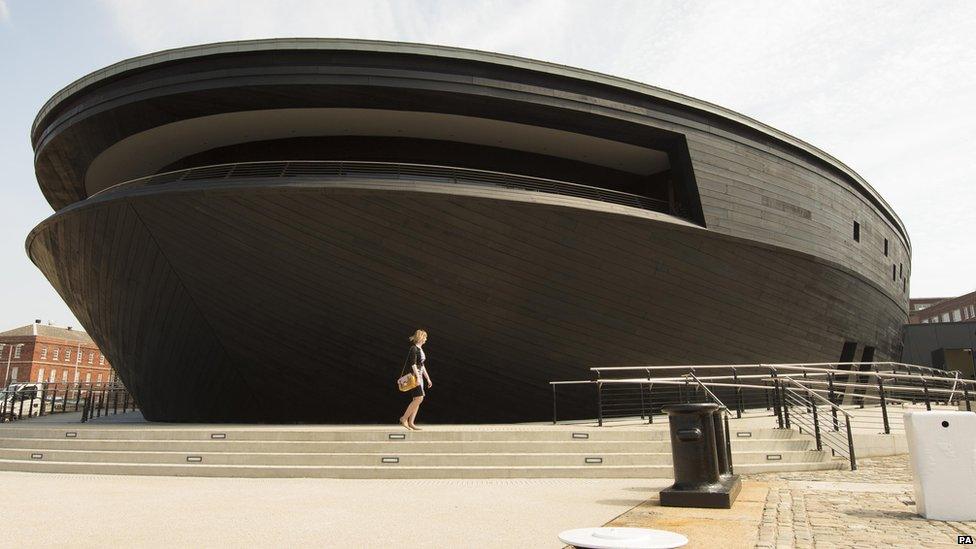Mary Rose ship remains go on display at new museum
- Published

This is the new Mary Rose museum, which houses the remains from the Mary Rose - a famous naval ship built in 1509. It's in Portsmouth, on the south coast of England, near the site where the ship was built. The museum opens to the public tomorrow.
The Mary Rose's crow's nest was among the parts of the ship recovered from the seabed when it was raised in 1982. The ship sank in 1545 after a gust of wind caught her and plunged her below the water.
After the ship was raised from the seabed, it was very delicate. It had to be sprayed with water until 1994 and then sprayed with a type of wax until earlier this year. For the next four years air tubes will be used to dry it out. After that, the screening walls and windows will come down and it will be on full display inside the museum.
This is a model of what the ship once looked like. The wreck was discovered in 1971 and since then 19,000 artefacts that were once on the ship have been raised up.
They include many personal items such as these belonging to the ship's purser. He was the man who controlled food and drink onboard the Mary Rose.
The items even included bones from food that had not yet been eaten. Meals were served on square plates giving origin to the expression "a square meal a day", which is still used today.
Shoes, a sock and a boot were among the footwear from 415 individuals that were found. Five hundred men and boys died when the ship sank and the museum has been dedicated to them. Thirty-five men survived.
There were at least 10 musical instruments onboard, which it's thought were used by paid musicians for entertainment. Surviving Tudor instruments like these are really rare.
When archaeologists opened this pepper mill they found peppercorns still inside. Being able to put pepper on your food in Tudor times was a sign of wealth as it was an expensive luxury.
The skeleton of a young, male dog was found just by the entrance to the master carpenter's cabin. Named Hatch by museum staff, he was between 18 months and two years old, probably used for catching rats and looked like a cross between a terrier and a whippet. The drawing is what Hatch is thought to have looked like.
